Interview for the „IZB Biotech News“
Novel small molecule drugs of the future targeting the CNS
Origenis uses its AI technology platform to develop highly optimised drugs for neurodegenerative, neuro-oncological and neuroinflammatory diseases.
March, 2024

© iStock / K-Kwanchai
Close-up of the chemical dripping from the pipette in the test tube in the laboratory
For over 20 years, Origenis GmbH has been working to modernise drug discovery. The company not only has an integrated technology platform for identifying and analysing innovative targets, but also a number of development candidates in challenging indications with high medical need. An interview with CEO & CSO Dr Michael Thormann about small molecules, the separation of technology and clinical development and the search for unexplored chemical spaces.
Dr Thormann, you are one of the founders of Origenis GmbH alongside Michael Almstetter and Dr Andreas Treml. How did the buyout from Morphochem AG come about in 2005 and what was the founding idea for Origenis?
The market environment in 2005 was difficult and Morphochem, despite being very well capitalised, was unable to seize the stock market window. The company then got in a tight financial situation and there was simply not enough money to advance both the technology platform, which we three founders had developed together within Morphochem, and the drug candidates in parallel.
That is why we decided to further develop the technology platform on our own with six colleagues from our drug discovery team. It helped that we already had two collaborations, with Probiodrug (now Vivoryon) in the central nervous system field and with Alcon in ophthalmology. Both companies saw the potential in our technology and said: We will continue to pay you. In other words, on the first day of Origenis, we had money in our account and two contracts. There was a lot of trust on the part of our business partners.
Today, you have an integrated technology platform for identifying and analysing new compounds against innovative targets. How did you get there?
We were facing a problem for which there was virtually no solution. You can create so many different small molecules of which there could be around 1060 different compounds. However, due to resources, we are always dependent on making the right ones. But how do we know which ones these are?
We looked at the chemical starting materials we had in the store and thought about what we could synthesise with them. The next problem was to map this digitally and be able to search in these chemical spaces. A decillion is a really big number, you cannot calculate all the possible substances, no matter how fast your computers are. So, we developed mathematical methods to quickly identify good solutions in these huge spaces, then implement and test them in the lab – and then feed the results back into the computer so that it learns what does not work and makes better suggestions the next time. In other words, we built virtual chemists, biologists, and pharmacologists. This allowed us to design new compounds, pre-optimise them with computers and use laboratory resources very efficiently.
What happened next?
Of course, we also want to patent our substances. But how do we know they don’t already exist? Even though the chemical space is very large in principle, medicinal chemistry and AI standard procedures often come up with very similar solutions, which leads to IP conflicts. Somebody publishes something interesting and then the others say, I am going to try it out, too, then I have less risk but also less innovation. I might still find a small area that is patentable, but the scope for optimisation is severely limited from the start. We, on the other hand, said: maybe there are completely new classes of substances, large unexplored chemical spaces. But to know that, you have to read everything. People always say we are in the information age, but in reality, most of the information is hidden somewhere. Someone has put a big lock on it and is holding out their hand, asking for a pile of money and offering stone-age methods of searching and analysing the information. Finding genuine sources of information that you can afford as a small company is challenging.
What we can get, however, are patent documents – we are talking about over 23 million documents worldwide for chemistry and pharmaceuticals. We need technology to extract chemical and non-chemical information from these documents. We developed that, and the next step was to look at the molecular targets. And then suddenly we had a matrix between substances, between enzymes or receptors, the diseases and the companies working on them.
To abstract the knowledge from patents and use this knowledge to position ourselves, we have developed a product called Cippix®. We use it to proactively compare what we do in terms of innovation with what happens in the patent space on a weekly basis. Cippix® can then tell us: watch out, you’re hitting an IP here.

Dr Michael Thormann, CEO and CSO of Origenis
© Origenis
What does your claim “where no one has gone before” mean?
Firstly, it refers to the substances. There are different chemical synthesis routes to make a substance. We have developed AI methods that represent chemistry as such in a completely different way to the classical named reactions; we are actually building a new representation of chemistry. We have never been afraid to say, that does not exist yet – we’ll do it anyway. It has been a long, rocky road, and we are not yet at the point where we can push a button and have a single perfect structure come tumbling out. But we are very good at rapidly generating families of new compounds with predefined properties that we can synthesise, patent, and develop. The number of patents we hold is good proof that even as a small company we can be very innovative.
The next point is extremely important: there are some organs or tissues that are difficult to reach, including the eye and the brain. With our technology platform, we are very good at designing compounds to reach the target tissue. We are one of the few companies whose compounds can cross the blood-brain barrier. This opens up completely new therapeutic opportunities, for example in viral infections of the central nervous system, neurodegeneration and brain tumours. These diseases represent major unmet medical needs. We have focused on the CNS because it is perhaps the most challenging organ with the largest market. On the other hand, CNS involvement can be demonstrated preclinically and allows the earliest possible differentiation from competitor programmes.
Why do your drug candidates cover so many indications?
We focus our research on the molecular target, a mechanism whose inhibition by small molecules may have multiple medical applications. Our approach is therefore different from that of large companies. For instance, they have a department for everything related to Parkinson’s disease. We exploit synergies, minimise development risk and maximise market potential with our pipeline-in-a-drug approach. Our drug candidates are all derived from our own AI platform.
This approach is very sustainable because you can start development in one major indication and then move on to other indications that follow from the mechanism. We look for targets that are difficult to address. Where can we very quickly demonstrate a point of differentiation with our selective compounds, for example central nervous availability? As a privately financed company, it is particularly important for us to demonstrate the potential of our drug candidates at an early stage to attract the interest of investors.
Together with the investor Kleiner Perkins, you founded the start-up company Neuron23 in the United States. How did this come about and how does it benefit Origenis?
We had very interesting neurodegeneration drug candidates in our portfolio. The idea is to diagnose diseases such as Parkinson’s and Alzheimer’s at a very early stage and slow down their progression, so that they do not become a problem during a person’s lifetime. We were betting on the right targets, which our technology had identified a few years earlier as “emerging targets”, and presented new classes of CNS drug candidates that could enter development immediately. US investors found this exciting, unlike their counterparts here.
That is why, together with Kleiner Perkins, we founded Neuron23 in 2018: with our drug candidates, with US money and with a US team that built up the company and slowly took over the assets. This has worked very well, two of our compounds are already in the clinic, Neuron23 has raised over $200 million and is on its way to an IPO.
Now the interesting part: how is Origenis involved? Initially, we helped to build this new spin-off, to hand over the assets and we even generated potential back-up candidates for a certain period of time. For this, we received research funding from Neuron23. At the same time, we think it is good that this start-up is developing independently of Origenis, as this makes it replicable. We still have a significant stake in Neuron23. If Neuron23 is commercially successful (via M&A or IPO), we will participate and have our return on investment – many years before the compounds reach the market.
And what is your business model at Origenis?
We are very good at the production of optimised, novel compounds that are potent, selective, and ready for development. But we do not develop them clinically. We would need completely different amounts of capital for that, and private investors alone cannot afford that. We cannot exploit the potential of our technology platform on our own. That is why we will commercialise the platform in an appropriate way – this is a first for us. This may involve collaborations with selected partners, for example in target identification or validation, or it may involve joint ventures.
We are also already working on the next spin-out along the lines of Neuron23. This will also open up new opportunities for investors. The idea is that we provide our development candidates with a reasonable data package and a reasonable IP position and then establish a vehicle with professional biotech investors to take care of the development and commercialisation of these assets. That means that Investors can invest in one development candidate without having to understand and fund five other assets, the entire patent portfolio and the technology platform. In this respect, we have adapted our business model to the existing market.
Origenis is thus increasingly becoming a holding company with different drug candidates and platforms in subunits that are more or less loosely associated with us. These do not necessarily have to be subsidiaries of Origenis. That makes the whole thing replicable.
You moved into the IZB in 2006. What makes this site special for you?
The IZB is a special location, not only for Germany, but also for Europe. There are many companies here and I like the proximity to the Max Planck Institute and the universities. That means you are closer to the pulse of things. What I particularly like are the events such as the IZBrunch or the press lounge, where the IZB brings people together. The people here are the most important for me.
For me, the IZB is a very pragmatic solution for early-stage logistics: high ceilings, clever ventilation, infrastructure designed for laboratories. Finding that elsewhere is a real challenge. You cannot just turn an office building into a laboratory, that does not work. Here you have the laboratories, and you can work – that is a big advantage for southern Germany. In addition, the IZB has accommodated our requests wherever possible. For example, the rooms for Origenis were redesigned to meet our needs. In his role as managing director, Dr Zobel has always been very committed to the interests of the tenants. Our long tenancy shows how valuable the IZB is to us as a company. If I could wish for anything, it would be an IZB2 for companies that have reached a certain level of maturity but are still not profitable.
For Origenis, the IZB era came to an end in 2023. We left the IZB and moved our offices and laboratories to new premises of over 1000 m2 at Semmelweisstrasse 1 in Steinkirchen.
Looking ahead, how do you feel about the future of the company and what are the next milestones you want to achieve?
We are very confident about the future because we have several business pillars that do not cannibalise each other. We have interesting and competitive products both on the drug and on the platform side. Our existence as a privately financed biotech company since 2006 alone shows that not everything has to be done according to external guidelines, that things can be done differently. I hope that we will continue to be very innovative and that we will be able to walk the tightrope between platform and development.
The IPO of Neuron23 would certainly be a milestone, even if we cannot control it. It would not only validate our platform on a broader scientific scale, but also be financially rewarding. For a company that started with nine people and now has almost thirty, this would be an excellent result.
Our next milestone is to take our lead project, the only p-Tefb inhibitor with unobstructed CNS penetration for metastatic oncology and neuro-oncology applications, into the clinic in the next twelve months. We have already founded a company called cedekaPharma to finance and conduct the clinical development of this asset. A next spin-off could be in the area of other CDK inhibitors, with a continued focus on neurological and oncological applications. So, we are working to further validate and increase the value of our technology platform by generating additional spin-outs with partners.




